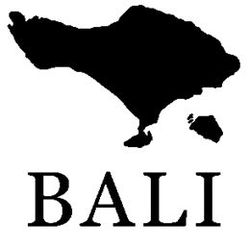BALI
Building management Applications on Lighting and building automation Infrastructure
Project description
Smart building technology will facilitate users to control and optimize building usage and performance, to increase productivity and safety, and to provide enhanced comfort. Currently, building automation technology is usually supplied by different companies focussing on specific building automation domains (e.g. HVAC, lighting, people flow, safety and security). Each of these ‘silos’ is now challenged by the recent availability of Internet of Things (IoT) technology. IoT enables easier system creation and device communication, leading to major market shifts as system and application development is no longer limited to the large, traditional players. Further steps towards smart buildings require the integration of separate domains and their devices, sensed data, and control. BALI aims at creating such an IoT-based application-enabling infrastructure as the basis for future smart building solutions.
Connected LED-based lighting has the potential to serve as a dense connected infrastructure that can provide all kinds of data and enables additional applications delivering added value to the building owner. Such IoT-enabled connected lighting and building automation systems (called “BALI systems”) have the potential to improve the energy performance of lighting and building automation systems, but also enable a wide array of applications providing value beyond energy savings, like optimization of office space usage and managing people flow. Hence, the advent of BALI systems constitutes a major step towards smart buildings.
The BALI project will investigate novel ways for efficient development of applications enabled by BALI systems. Examples for such applications are:
• Office space optimization: reduce required office space by allocating work places based on real-time data of a building’s environment - brings considerable tenant cost savings.
• Enhanced people and goods flow: presence data can control people and goods flow, reduce waiting times, boost productivity and user satisfaction, and reduce accidents.
• Productivity enhancement: Using environmental sensor data can improve the office worker’s experience and comfort and thus lead to enhanced productivity.
BALI will foster creation of an ecosystem for BALI services and applications. The availability of and access to all kinds of building related information and controls as provided by BALI systems will enable a host of novel applications created by a community of BALI application developers.
The technical core of the BALI project is a set of functions supporting services and applications, and a runtime system for their execution. The so-called BALI application enablement functions include semantic discovery of data and controls, resource allocation and management, and secure and authorized access to data and controls. These functions guarantee reliable operation of BALI systems and provide the basis for engineering and commissioning of building management applications. The BALI application enablement is complemented by semantic models of devices, resources, services and applications. To ensure the correct configuration and reliable operation of BALI deployments, methods for engineering and commissioning as well as a sandbox environment for simulation, validation and optimization will be developed and used for the creation of a set of demonstrators.
The envisioned outcome of the BALI project is likely to create additional opportunities in the building ecosystem and new roles in the business value chain. These opportunities will strengthen the competitiveness of the European Industry compared to competitors from the US and Asia.

http://www.philips.com/a-w/innovationmatters/blog/lighting-beyond-illumination.html
Finland
Germany
CIBEK
Germany
Fraunhofer Gesellschaft
Germany
Siemens AG
Germany
Technische Universität München
Germany
University of Rostock
Germany
WIKON Kommunikationstechnik GmbH
Germany
Portugal
Cleanwatts Digital, S.A.
Portugal
Spain
Abengoa Innovación, S.A.
Spain
Noxium
Spain
The Netherlands
Eindhoven University of Technology
The Netherlands
Philips Lighting
The Netherlands
Slimmer.AI
The Netherlands
Thales
The Netherlands
TNO -ESI
The Netherlands
Türkiye
BY Teknik Dizayn
Türkiye
DIA Yazilim San. ve Tic. A.S.
Türkiye
Ericsson Ar-Ge
Türkiye
ERSTE Software Limited
Türkiye







